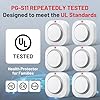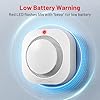Radar detectors are an important tool for many drivers, but they require regular maintenance in order to function properly. Depending on the model and make of radar detector, they may need to be calibrated as often as once a month or as little as once a year.
However, it is generally recommended that radar detectors be calibrated at least once every three months to ensure accuracy.
Contents
How often do radar detectors need to be calibrated?
Radar detectors need to be calibrated regularly to ensure accurate readings. The frequency of calibration will depend on the make and model of the detector, as well as the environment in which it is used. Generally, it is recommended that radar detectors be calibrated every few months.
What can happen if a radar detector is not properly calibrated?
If a radar detector is not properly calibrated, it may give false readings. This could lead to a driver being pulled over for speeding when they were not actually speeding. In some cases, it may also cause the radar detector to miss real speeding vehicles.
How can I tell if my radar detector needs to be calibrated?
Most radar detectors have a calibration indicator that will let you know when the device needs to be calibrated. If your radar detector does not have a calibration indicator, you can usually tell it needs to be calibrated if it is giving frequent false readings.
How do I calibrate my radar detector?
Calibrating a radar detector is typically a simple process. Most radar detectors come with a calibration kit that includes everything you need to properly calibrate the device.
The importance of calibrating your radar detector.
Radar detectors are an important tool for drivers who want to avoid speeding tickets. However, like all electronic devices, they need to be properly calibrated in order to work correctly. Otherwise, they may give false readings or fail to detect radar signals altogether.
How often a radar detector needs to be calibrated depends on a number of factors, including the make and model of the device, the type of radar it is designed to detect, and the environment in which it will be used. In general, however, most radar detectors should be calibrated at least once a year.
There are a few different ways to calibrate a radar detector. The most common method is to use a tuning fork, which emits a radar signal at a specific frequency. The detector can then be adjusted until it is able to accurately detect the signal.
Another way to calibrate a radar detector is to use a special test device known as a radar gun. These devices emit a brief burst of radar energy, which the detector should be able to pick up. If it does not, the sensitivity may need to be adjusted.
Finally, some radar detectors can be calibrated using a software program. This method is generally only recommended for more expensive, higher-end models.
No matter which method you use, calibrating your radar detector is an important step in ensuring that it will work correctly and help you avoid costly speeding tickets.
How to properly calibrate your radar detector?
Radar detectors need to be calibrated regularly to ensure they are working properly. There are a few different ways to calibrate your radar detector. The most common way is to use a drive test. This is where you drive a known speed and distance, and then use the radar detector to measure your speed.
Another way to calibrate your radar detector is to use a GPS-based method. This is where you use a GPS device to track your speed and distance, and then use the radar detector to measure your speed.
The third way to calibrate your radar detector is to use a static calibration. This is where you set up your radar detector in a fixed location, and then use a known speed and distance to calibrate it.
The best way to calibrate your radar detector is to use a combination of all three methods. This will ensure that your radar detector is properly calibrated and working correctly.
The benefits of having a calibrated radar detector.
If you’re like most people, you probably don’t think too much about calibrating your radar detector. After all, it’s just a tool to help you avoid getting speeding tickets, right?
Wrong.
While it’s true that a radar detector can be a helpful tool in avoiding speeding tickets, it’s also important to remember that these devices are far from perfect. In order to ensure that your radar detector is working properly, it’s important to calibrate it on a regular basis.
So, how often should you calibrate your radar detector?
The answer to this question depends on a few factors, including the type of radar detector you have and how often you use it. However, as a general rule of thumb, it’s a good idea to calibrate your radar detector at least once every few months.
By taking the time to calibrate your radar detector, you can help ensure that it’s working properly and that you’re getting the most accurate readings possible. In the end, this can help you avoid costly speeding tickets and keep you safe on the road.
How to extend the life of your radar detector with proper calibration?
Radar detectors are an important tool for drivers who want to avoid getting speeding tickets. While radar detectors can be very effective, they do need to be calibrated periodically to ensure they are working properly. Most radar detectors need to be calibrated every few months, but the exact frequency will depend on the model and make of the detector.
If a radar detector is not properly calibrated, it may give false readings or fail to detect radar signals altogether. This can obviously lead to a driver getting pulled over for speeding, even if they were not actually speeding. To avoid this, it is important to make sure that radar detectors are calibrated on a regular basis.
There are a few different ways to calibrate a radar detector. The most common method is to use a tuning fork. This involves holding the tuning fork next to the radar detector and then striking it. The radar detector should then beep or make some other indication that it is working properly.
Another method of calibration is to use a radar gun. This involves pointing the radar gun at the radar detector and then checking the reading on the gun. The radar detector should be able to pick up the signal from the radar gun and give a reading that is close to the actual speed of the gun.
Some radar detectors come with built-in calibration features. These detectors will usually have a button that can be pressed to initiate the calibration process. Once the process is complete, the radar detector should be ready to use.
Regardless of the method used, it is important to make sure that radar detectors are properly calibrated. This will ensure that they are able to give accurate readings and help drivers avoid getting speeding tickets.
How improper calibration can damage your radar detector?
If your radar detector is not properly calibrated, it can damage the unit. Improper calibration can cause the unit to overheat, which can damage the electronics. It can also cause false alarms, which can lead to you missing a real threat.
The consequences of not calibrating your radar detector?
While there is no solid answer for how often radar detectors need to be calibrated, it is generally recommended that users calibrate their devices at least once every few months. Failing to calibrate a radar detector can lead to a number of consequences, the most notable of which is decreased performance.
A radar detector that is not properly calibrated is more likely to produce false positives, and will also be less effective at detecting actual radar signals. This can obviously lead to getting pulled over for speeding, even if you were not actually speeding. In addition to decreased performance, not calibrating your radar detector can also shorten its lifespan.
Summary
Radar detectors are an important tool for drivers, but many people don’t realize that they need to be calibrated on a regular basis. Most radar detectors will need to be calibrated at least once a year, but some may need to be calibrated more often.
There are a few different ways to calibrate a radar detector, and the best method may vary depending on the make and model of the detector. However, the most important thing is to make sure that the detector is properly calibrated so that it can provide accurate readings.



















